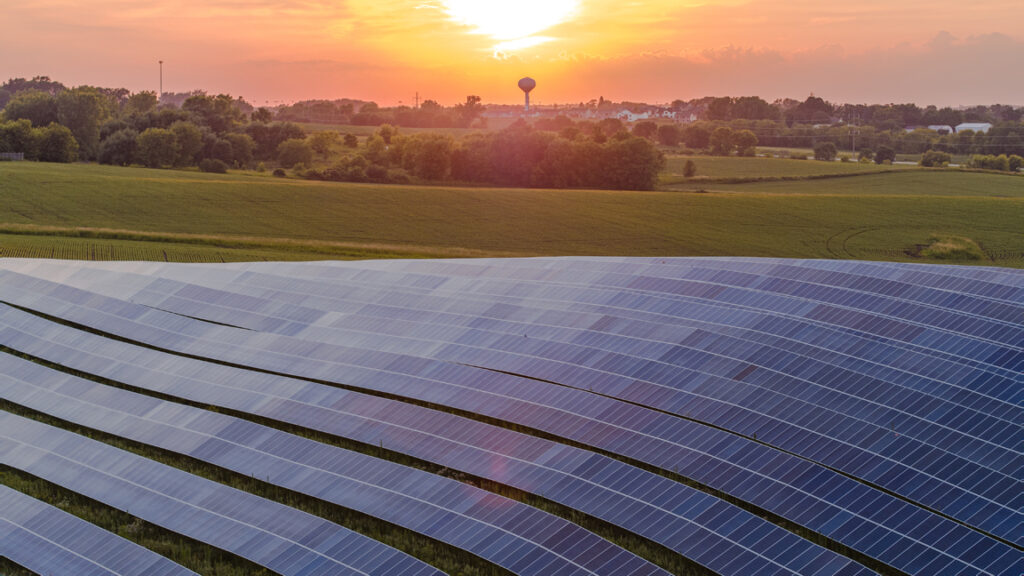
Utility Solar
What Is Utility Solar?
Utility Solar can broadly be described as projects that are anywhere from 10MW to 1GW in size. Typically, the projects will require somewhere between 500 and 2000 acres of land that is located nearby transmission level electrical infrastructure which can be either a highly rated transmission line or a substation. Utility Solar is one of the cheapest forms of energy production available today, and has brought billions of dollars of investment into rural communities across the country.
Unlike Community Solar, Utility projects produce power that is sold into the wholesale energy market to larger buyers of energy. Utility companies across the country buy these solar projects to include in their electrical generation mix, or often buy the electricity the projects produce in order to provide low cost wholesale energy to all of their customers. Additionally, many large corporations with renewable energy goals or carbon offset commitments they’ve made to their shareholders will contract to buy the power from utility solar projects.
SolarStone currently has 18 Utility Scale solar projects in development in the US totaling 5000+ MWdc

Utility solar projects provide significant benefits to both the landowners and wider communities. Landowners are provided a guaranteed source of revenue that is not dependent on increased costs for operational inputs (seed, fertilizer, labor, etc.) and long hours working the fields to bring a crop to a market that sees wide fluctuations in commodity pricing. Accordingly, many farmers view leasing land for solar as a way to both hedge against volatile market risk, and a way to keep their land within their family if their children are not interested in farming as a career path.
From a community perspective, the benefits reach far and wide. Most directly, utility solar projects significantly increase the lands tax revenue that typically increases funding for the local schools, towns, and county. SolarStone also contracts with local businesses to provide construction services and materials for things like road aggregate, fencing, ground cover seed mix, vegetative screening shrubs and trees, and long term operation and maintenance facilities. Additionally, during construction, there will be an influx of well paid construction workers that will boost local businesses like hotels, restaurants, grocery stores, and gas stations.